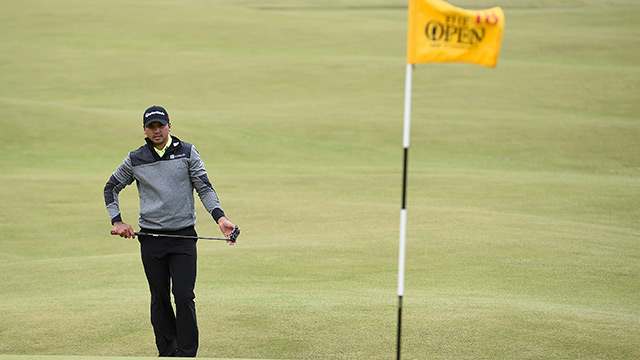NEWS
Jason Day: 'Walk the line' on your putts

Maybe Johnny Cash was referring to golf when he sang "I Walk The Line."
Probably not, but Jason Day suggests amateurs should use more than their sense of sight when trying to read longer putts. His tip: Walk the line and get a feel for the pitch of the green.
"You're not walking around the putt," Day said recently at a media outing presented by Adidas at Reynolds Plantation. "In this case, you're walking the line so you may be feeling something with your feet that you can't see, even if you're staring down from the hole to the ball. You're able to feel the actual putting line."
Why? Your eyes can sometimes deceive you. Course designers are notorious for optical illusions, using the lay of the land to trick your eyes into either seeing breaks that aren't there, or hiding subtle breaks that are.
The only way to tell for sure is to use your sense of touch, through your feet.
[wide_search_instructor]
"For long putts, don't walk on your line but walk alongside of it, where you think it's going to go," Day said. "If it's a left-to-right putt from 20 feet, you can walk from the ball all the way to the hole. And sometimes it's better to do, because you won't see subtle breaks if you stand behind the ball."
If it sounds time-consuming or redundant, Day said it's really not that different than the way most amateurs go about figuring out the line -- which is walking all the way around the green, trying to see every angle.
"It doesn't take long -- just walk up to the hole and walk back," Day said. "It's certainly less time than behind the ball, then behind the hole and the side, like most guys do."
Why walk the line? Because you'll notice little things not discernable from behind the ball.
"To be able to walk the line and feel the subtle changes of the putt, you'll be able to make a better decision on whether it's going uphill or downhill first, then left or right," Day said. "Especially if you're playing on Bermuda grass, it's another way to check where the grain's going and what it's doing up through the putt."
When you're a good distance from the hole, there's certainly more factors that come into play. There may be multiple breaks. The putt may start uphill but then drop down, or do the opposite. The more data you can accumulate, the better opportunities you'll have to either sink it or at least get it close.
And distance control is a major issue for most amateurs, Day said.
"It's all about gathering the information so you can make a better decision," he said. "If you can walk the line, feel the grain through the shoes, you'll be able to make a better decision whether to hit the putt harder or softer."
